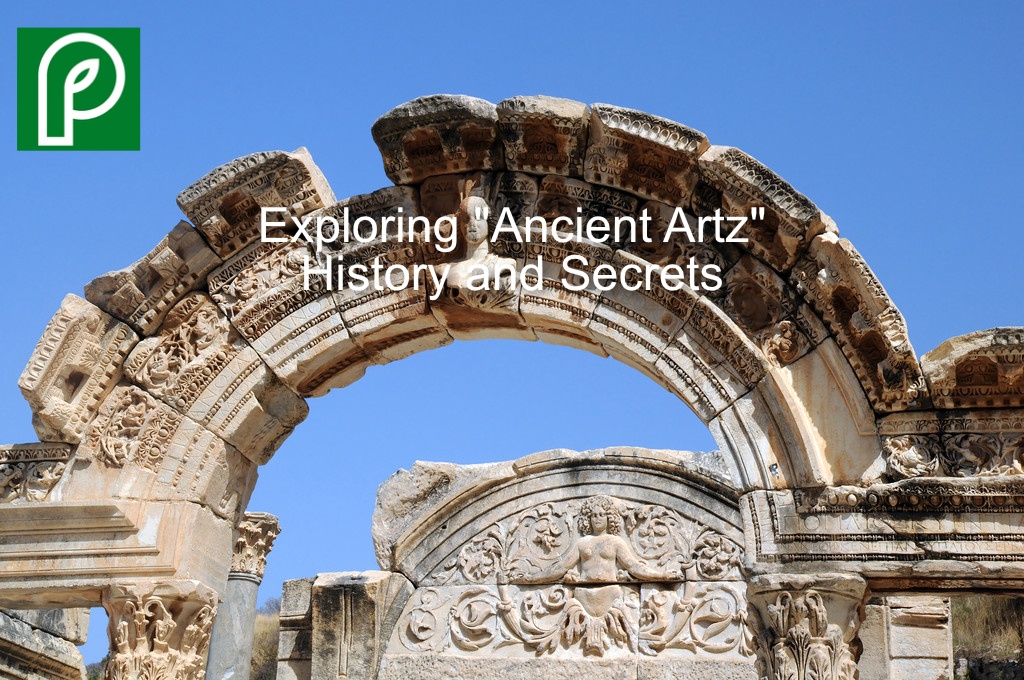Blog
Ancient Artz – A Journey Through History of Artz

Ancient Artz has always reflected human civilization, capturing the essence of cultures, beliefs, and innovations throughout history. “Ancient Artz – A Journey Through History of Artz” delves into the rich tapestry of artistic expression from ancient times, exploring how art has evolved and influenced societies across the globe. This comprehensive guide aims to give readers an in-depth understanding of ancient art forms, their significance, and their enduring legacy.
Exploring “Ancient Artz” History and Secrets

Ancient artz encompasses a wide range of artistic expressions created by early civilizations. From the intricate carvings of Mesopotamia to the majestic sculptures of ancient Greece, each piece offers a glimpse into the lives and minds of our ancestors.
Key Characteristics of Ancient Artz:
- Symbolism: Many ancient artworks use symbols to convey deeper meanings and cultural narratives.
- Religious Themes: A significant portion of ancient artz is dedicated to religious and spiritual subjects.
- Use of Natural Materials: Early artists used stone, clay, and metal to create durable and lasting pieces.
- Functional Art: Art was often intertwined with daily life, serving both aesthetic and practical purposes.
The Evolution of Ancient Artz

Artz has continuously evolved, influenced by changing societal structures, technological advancements, and cultural exchanges. Understanding this evolution helps us appreciate the diversity and complexity of ancient art forms.
Stages of Evolution:
- Prehistoric Artz: The earliest forms of art, including cave paintings and primitive sculptures.
- Ancient Civilizations: Art developed alongside complex societies like Egypt, Greece, and Rome.
- Medieval Artz: Transitioning from classical forms to more abstract and symbolic representations.
- Renaissance Influence: A revival of classical techniques and humanism influencing artz.
Prominent Ancient Civilizations and Their Artz
Exploring the artz of various ancient civilizations reveals unique styles and contributions to the art world.
Ancient Egypt:
- Iconic Structures: The pyramids and the Sphinx stand as testaments to Egyptian architectural prowess.
- Hieroglyphics: A writing system that combines logographic and alphabetic elements, often depicted in art.
- Sculptures and Reliefs: Detailed representations of gods, pharaohs, and daily life.
Ancient Greece:
- Sculpture: Emphasis on human anatomy and realism, exemplified by statues like the Venus de Milo.
- Architecture: Development of the Doric, Ionic, and Corinthian orders influencing Western architecture.
- Pottery: Intricate designs and mythological scenes painted on ceramic vessels.
Ancient Rome:
- Mosaics: Complex and colorful designs created from small pieces of stone or glass.
- Frescoes: Wall paintings that adorned public buildings and private homes.
- Engineering Marvels: Architectural innovations like the arch, vault, and concrete construction.
Key Contributions of Each Civilization:
| Civilization | Key Contributions |
|---|---|
| Egypt | Pyramids, hieroglyphics, monumental sculptures |
| Greece | Realistic sculpture, classical architecture |
| Rome | Mosaics, frescoes, engineering innovations |
Techniques and Materials in Ancient Artz
The techniques and materials used by ancient artists were often dictated by the resources available and the intended purpose of the artwork.
Common Techniques:
- Carving: Sculpting figures and symbols from stone or wood.
- Painting: Using natural pigments on walls, pottery, and papyrus.
- Casting: Creating metal statues through molds and molten metal.
Materials Used:
- Stone: Durable and widely available, used for sculptures and buildings.
- Clay: Malleable and used for pottery and small figurines.
- Metal: Valued for its strength and used in tools, weapons, and decorative items.
- Papyrus: Early form of paper used for writing and painting.
Chart of Techniques and Materials:
| Technique | Description | Common Materials |
|---|---|---|
| Carving | Sculpting figures from hard materials | Stone, wood |
| Painting | Applying pigments to surfaces | Natural pigments, papyrus |
| Casting | Creating metal objects using molds | Bronze, gold, silver |
Religious and Mythological Themes in Ancient Artz
Religion and mythology played a central role in shaping the themes and subjects of ancient artz. Artists often depicted deities, mythological stories, and religious ceremonies, reflecting the spiritual beliefs of their societies.
Examples of Religious Themes:
- Egyptian Deities: Representations of gods like Ra, Osiris, and Isis in statues and reliefs.
- Greek Mythology: Scenes from myths such as the Labors of Hercules or the Odyssey depicted in pottery and sculpture.
- Roman Religion: Artistic portrayals of Roman gods and the integration of Greek gods into Roman culture.
Importance of Religious Artz:
- Cultural Identity: Reinforced societal values and religious beliefs.
- Educational Tools: Served as visual narratives for teaching myths and religious stories.
- Symbolic Communication: Conveyed complex spiritual concepts through visual symbolism.
Influence of Ancient Artz on Modern Art
The legacy of ancient artz continues to influence contemporary art forms, inspiring artists and shaping artistic movements.
Ways Ancient Artz Influences Modern Art:
- Aesthetic Principles: Modern designs reflect the Proportions and symmetry of Greek sculpture.
- Techniques: Carving and casting techniques have evolved but still form the foundation of sculpture.
- Symbolism: Modern artists draw inspiration from ancient symbols and mythological themes.
Expert Insight:
Dr. Emily Thompson, Art Historian, states, “The foundations laid by ancient civilizations are evident in today’s art. The emphasis on human form, storytelling, and technical mastery continues to inspire artists worldwide.”
Chart of Influences:
| Ancient Influence | Modern Application |
|---|---|
| Greek Proportions | Architectural designs and figure sculptures |
| Egyptian Symbolism | Contemporary abstract art |
| Roman Engineering | Modern architecture and structural designs |
Famous Ancient Artz Pieces and Their Significance
Highlighting some of the most renowned pieces of ancient artz helps us understand their enduring significance and the stories they tell.
The Parthenon Marbles (Elgin Marbles):
- Description: A collection of classical Greek marble sculptures that originally adorned the Parthenon in Athens.
- Significance: Represent the height of Greek artistic achievement and religious devotion.
The Terracotta Army:
- Description: Thousands of life-sized clay soldiers were buried with China’s first Emperor, Qin Shi Huang.
- Significance: Demonstrates the emperor’s power and the importance of the afterlife in Chinese culture.
The Bust of Nefertiti:
- Description: A painted limestone bust representing the Egyptian queen Nefertiti.
- Significance: Exemplifies the artistry and beauty standards of ancient Egypt.
Chart of Famous Artz Pieces:
| Artz Piece | Origin | Significance |
|---|---|---|
| Parthenon Marbles | Greece | Symbol of classical Greek art and architecture |
| Terracotta Army | China | Representation of imperial power and beliefs |
| Bust of Nefertiti | Egypt | Example of Egyptian craftsmanship and beauty |
| Moai Statues | Easter Island | Expression of Rapa Nui culture and spirituality |
| Venus de Milo | Greece | Icon of classical sculpture and female form |
Preservation of Ancient Artz
Preserving ancient artz is crucial for maintaining cultural heritage and allowing future generations to appreciate historical achievements.
Methods of Preservation:
- Climate Control: Regulating temperature and humidity to prevent deterioration.
- Restoration: Carefully repairing damaged artworks using traditional and modern techniques.
- Protective Display: Using cases and barriers to safeguard artz from environmental damage and vandalism.
- Digital Archiving: Creating digital copies to preserve details and provide access without physical handling.
Challenges in Preservation:
- Environmental Factors: Exposure to elements can cause significant damage over time.
- Human Impact: Vandalism, theft, and improper handling threaten ancient artz.
- Resource Limitations: Adequate funding and expertise are required for effective preservation efforts.
Tips for Supporting Preservation:
- Donate to Museums: Support institutions that focus on preserving ancient artz.
- Advocate for Protection: Raise awareness about the importance of preserving cultural heritage.
- Visit and Respect: When visiting museums, carefully handle exhibits and follow guidelines to prevent damage.
Ancient Artz in Everyday Life
Ancient artz wasn’t confined to museums or temples; it was an integral part of daily life, serving functional and decorative purposes.
Examples of Everyday Artz:
- Pottery: Used for cooking, storing, and serving food, often decorated with intricate patterns and scenes.
- Textiles: Woven fabrics with decorative motifs used for clothing and household items.
- Jewelry: Made from precious metals and stones, adornments reflect social status and cultural identity.
- Tools and Utensils: Functional items like tools and utensils often feature artistic designs for aesthetic appeal.
Impact on Society:
- Economic Role: Production and trade of artistic items contributed to the economy.
- Social Status: Ownership of certain artz pieces indicated wealth and status within the community.
- Cultural Expression: Artz allowed individuals to express their beliefs, values, and identities.
Artz as a Historical Record
Ancient artz serves as a valuable historical record, providing insights into past civilizations’ lives, beliefs, and environments.
Types of Historical Information:
- Daily Life: Depictions of everyday activities, clothing, and social interactions.
- Religious Practices: Representations of rituals, deities, and spiritual beliefs.
- Technological Advancements: Showcasing tools, architecture, and engineering techniques.
- Political Structures: Illustrations of governance, leadership, and societal organization.
Unique Insights from Artz:
- Social Hierarchies: Artz often highlights the roles and statuses of different societal members.
- Trade and Interaction: Exchange of artistic styles and materials indicates trade relations and cultural exchanges between civilizations.
- Adaptation and Innovation: Evolution of artz styles reflects how societies adapted to changes and embraced innovations.
Expert Quote:
Professor Alan Richards, Archaeologist, notes, “Ancient artz is more than just aesthetic expression; it’s a window into the past, revealing the complexities of human societies and their evolution over time.”
Conclusion
“Ancient Artz – A Journey Through History of Artz” underscores the profound impact that art has had on human civilization. From the grand monuments of ancient Egypt to the realistic sculptures of Greece and the intricate mosaics of Rome, each piece of ancient artz tells a story of creativity, belief, and societal development. Preserving these artworks ensures that future generations can continue to learn from and appreciate the rich cultural heritage they represent. By understanding the techniques, themes, and significance of ancient artz, we gain a deeper appreciation for the artistic achievements that have shaped our world.
Frequently Asked Questions (FAQs)
1. What defines ancient artz?
Ancient artz refers to artistic expressions created by early civilizations, typically before the Middle Ages. It includes sculptures, paintings, pottery, textiles, and architectural structures that reflect the time’s cultural, religious, and social aspects.
2. How is ancient artz preserved today?
Preservation methods include climate control, restoration techniques, protective display measures, and digital archiving. Museums and preservation societies play a crucial role in maintaining and safeguarding ancient artz.
3. Why is ancient artz important?
Ancient artz provides valuable insights into past civilizations’ lives, beliefs, and innovations. It serves as a historical record and helps us understand human societies’ cultural and societal development.
4. Can ancient artz influence modern art?
Yes, ancient artz continues to inspire modern artists. Elements such as proportions, symbolism, and techniques from ancient art are often incorporated into contemporary art forms, bridging the gap between past and present.
5. Where can I view ancient artz?
Ancient artz can be viewed in museums, historical sites, and dedicated cultural institutions worldwide. Additionally, many museums offer virtual tours and online collections for remote access.
